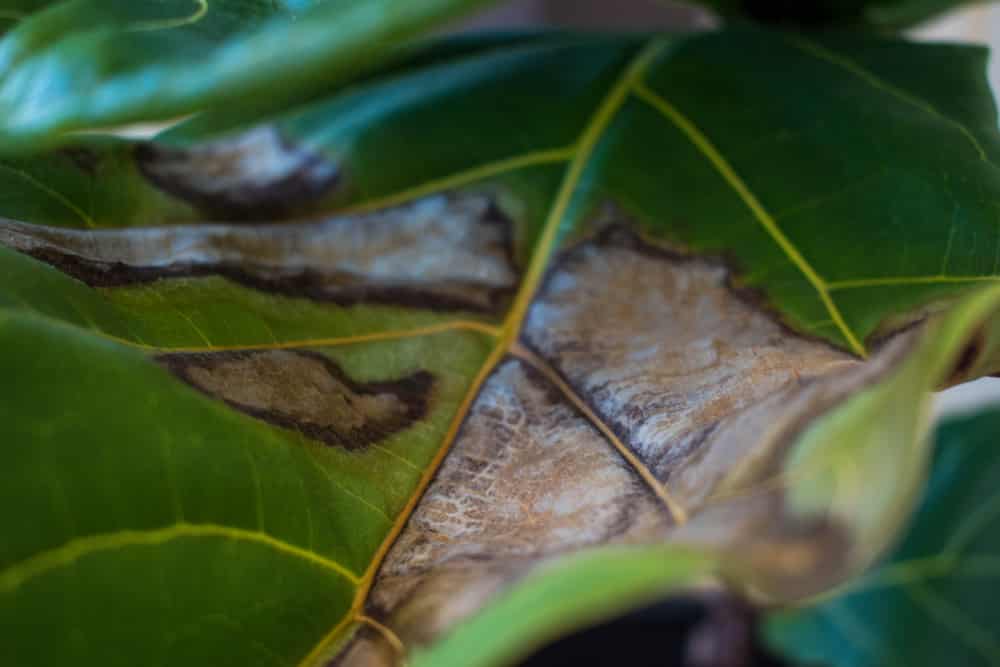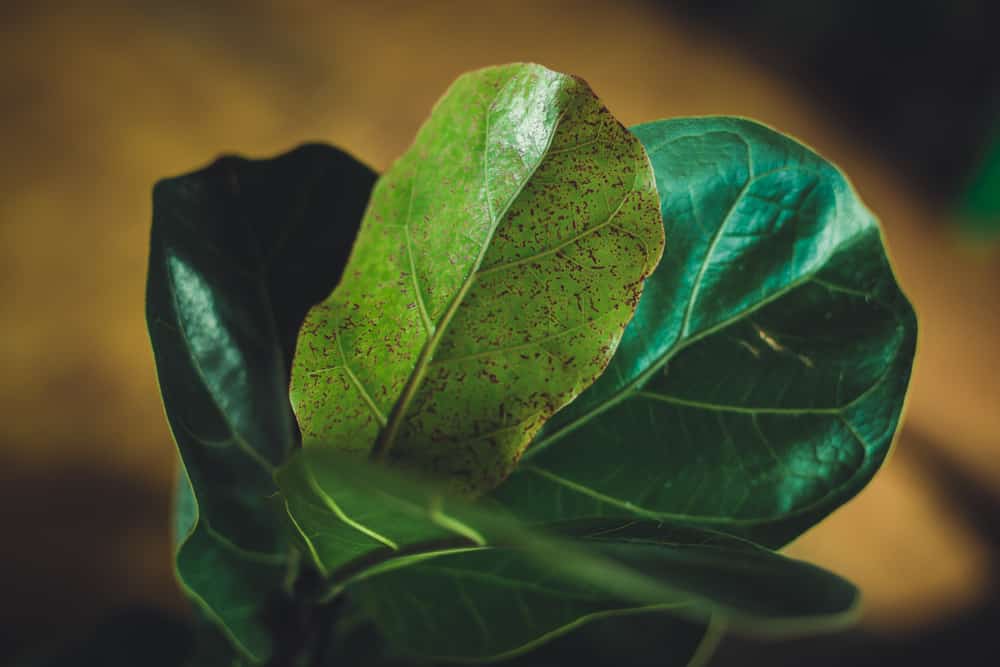If you have a fiddle leaf fig, you probably already know that these plants require relatively high maintenance levels. Indeed, it can be fussy, and if you don’t give it what it needs, it will show it. For this reason, if you don’t have the time or the patience to grow such a plant, you should look for another species.
But if you have one of these plants and suddenly notice its glossy deep green leaves turning brown, you have landed in the right place. Here we put together all the information you must have on hand to solve issues with your fiddle leaf fig’s brown edges.
What Does It Mean Your Fiddle Leaf Fig Has Brown Edges?

Taking care of plants means understanding what they are trying to communicate through how they grow. And if you suddenly notice your lush and deep green fiddle leaf fig developing brown spots, we know it feels frustrating.
Without knowing what’s causing the issue, you might have trouble reverting your plant to its natural colors. Here is a list of factors that might result in brown discoloration on your plant’s leaves. Keep reading to have a clearer idea of what you should do about your plant.
Overwatering
One of the most common problems with fiddle leaf figs is giving them too much water. Such a condition might result in root rotting or fungal infections, which often cause brown spots.
To prevent this, plant your fiddle leaf fig in a container with a suitable potting mix: it must be well-draining and airy. To decrease compaction, consider adding some perlite to the substrate.
Also, remember to feel the soil with your fingers before adding extra moisture. Allow your plant’s surroundings to dry before rewatering it.
If you suspect overwatering is causing your plant’s leaf edges to get brown, you can save it by trimming the affected leaves and decreasing the watering frequency. Also, depending on the severity of the situation, you may have to transplant your fig to a new container with fresh potting mix. Doing so will avoid further damage to your plant and allow it to survive the overwatering issue without suffering from rotting. Dryness will cause curling and brown spots at the edges of the leaves, so remember to keep a balance.
Sunburn
Fiddle leaf figs are delicate plants that won’t do well under direct sunlight. Indeed, too much sun can scorch the plant’s leaves and result in brown edges. Instead, place your plant where it can receive bright but indirect light. Ideally, you must keep it in a bright room without exposing it directly to the sunrays. Consider getting some shears to reduce risks.
Sunburn is relatively easy to identify. If you suspect that’s what’s causing your fiddle leaf fig brown edges, move it to a different location. Also, don’t forget to prune the damaged leaves to allow for a faster recovery.
Of course, avoid placing them in a dark room: symptoms of inadequate lighting include leave shedding, which is also unpleasant.
Inadequate Growing Conditions
As we mentioned, you must consider several factors when growing a fiddle leaf fig in your house. One of them is temperature. These plants won’t do well at low temperatures and less if you let them live near cold windows or the air conditioning system. Instead, keep your plant warm and humid at temperatures around 60 and 75°F.
Ideally, place it somewhere it won’t receive cold drafts. If you are worried about keeping a constant humidity level, consider getting a humidifier, and don’t forget to mist your fiddle leaf fig every one to three days.
Keep the environment around your fiddle leaf fig humid. Of course, here is where selecting a suitable potting mix is crucial. After all, humidity without excellent drainage can cause rotting and attract other detrimental fungal infections.
Pest Attacks
Fiddle leaf figs may have several issues, but attacks from pests aren’t that common. Still, they can cause brown spots on the plant’s leaves, so it is a good idea to keep an eye on your plant and check for the presence of bugs. Insects attack tender growth and cause visible damage there. So, check those parts of your plants (including the undersides of the leaves).
The faster you take care of the plant, the easier it will be to treat the infestation. Spray your plant with a suitable product (better if organic) to eliminate the problem.
